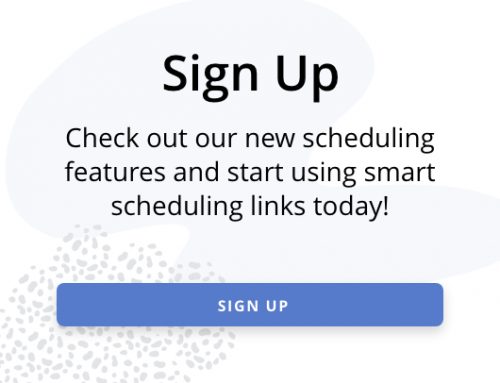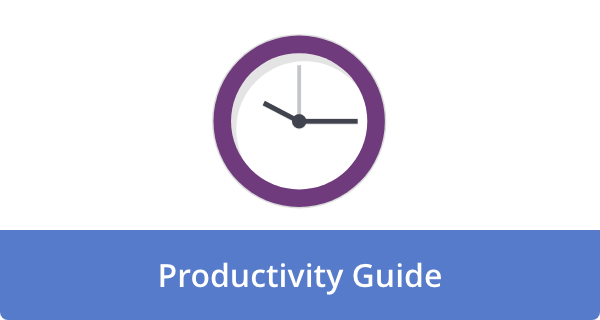

As we all know, time is more than just a resource; it’s our most valuable currency. After all, effective time management is a vital skill when balancing work and personal projects or making the most of your time. As with getting fit, time management helps you build and maintain productivity through strength training, endurance, and flexibility.
Taking this metaphor a step further, consider time management as a fitness regimen and your productivity as the muscles you need to develop. So, we’ve put together a series of exercises to help you get in shape to be a productivity powerhouse with time management skills.
Exercise 1: Time Audit – Your Productivity Baseline
This exercise provides vital data about your current fitness level. For the next week, keep a meticulous record of everything you do every day. Whether it’s a focused work session or a quick email check, from the commute to coffee break, no activity is too small to record. To make this work, you need to be precise and honest in your documentation.
After the tracking period has ended, categorize your recorded activities. Where do you spend the majority of your time? Is it being spent on productive, goal-oriented activities? Are there significant chunks of time that are unproductive or even wasted? With this detailed audit, you can clearly show how you are currently allocating your time.
Time audits are similar to fitness trackers. They reveal areas in which you can optimize your physical activity, thereby improving your time management and, subsequently, your productivity. The purpose is not to be judgmental but to gain valuable insights to help you plan your training.
Strength training: Building core time management skills.
Strength training forms the foundation of any fitness program, building powerful muscles and a resilient physique. In the same vein, cultivating a solid foundation of core skills is vital to handling increasingly complex tasks efficiently and effectively. To keep your productivity “muscles” strong and ready for any challenge, you will incorporate these foundational exercises regularly into your routine.
Exercise 2: The Pomodoro Technique – Lifting Weights for Your Focus
For your cognitive focus, the Pomodoro Technique can be compared to interval training. Typically, it consists of focused 25-minute intervals separated by short, rejuvenating breaks. As you build your “focus endurance” through this structured approach, you can work more intensely without feeling burned out.
When you commit to these defined work periods, you train yourself to resist the distractions that threaten to derail your productivity.
The following steps will help you perform this technique effectively;
- Set a timer for 25 minutes. During this time, you will be focused on your work.
- Work on a single, defined task with unwavering concentration. You should resist the temptation to check your email, browse social media, or do anything else that might distract you.
- When the timer rings, signaling the interval’s end, take a 5-minute break to recharge. Allow your mind to wander briefly by taking a break, stretching, or stepping away from your task.
- After completing four “Pomodoros” (four work intervals and three short breaks), take a longer break of 15–30 minutes. In addition to allowing more time for mental recovery, this extended break also provides for physical recovery.
When you consistently use the Pomodoro Technique, you can maintain focused attention for more extended periods. It’s a simple yet powerful tool for enhancing concentration and increasing productivity.
Exercise 3: Task Prioritization (The Eisenhower Matrix) – Your Core Productivity Workout
As part of your time management fitness regimen, prioritize tasks. In the same way that your core provides stability and support to all your other movements in physical fitness, your ability to prioritize tasks will enable you to focus on what is most important. This ensures long-term productivity and keeps you from distracted by less important tasks.
Designed after U.S. President Dwight Eisenhower, the Eisenhower Matrix divides your tasks into two key categories: urgency and importance. Using this framework, your tasks can be divided into four distinct quadrants.
- Quadrant 1: Urgent and Important (Do these tasks immediately). Often, there are urgent deadlines or serious consequences associated with these tasks, which require immediate attention.
- Quadrant 2: Not Urgent but Important (Schedule these tasks). Tasks that contribute significantly to your long-term goals but don’t have immediate deadlines are examples of these. For strategic progress, scheduling time for these tasks in advance is crucial.
- Quadrant 3: Urgent but Not Important (Delegate these tasks). While these tasks may seem urgent, they do not directly contribute to your core objectives. You can devote your time and energy to more important tasks by identifying and delegating these tasks.
- Quadrant 4: Not Urgent and Not Important (Eliminate these tasks). These are the time-wasters that provide little to no value. You must consciously eliminate these activities from your schedule to maximize your productivity.
Regularly using the Eisenhower Matrix allows you to allocate your energy and time strategically, ensuring you are not spending valuable resources on low-value tasks. When ingrained, this habit of prioritization becomes intuitive and invaluable, much like practicing your abdominal muscles.
Cardiovascular conditioning: Building mental endurance.
Cardiovascular conditioning is key to building stamina and endurance in terms of physical fitness. Similarly, time management requires mental endurance to maintain productivity throughout the day, prevent mental fatigue, and ensure you don’t burn out before achieving your goals. Exercises like these are designed to help you maintain focus and manage energy fluctuations.
Exercise 4: Time Blocking – Pacing Yourself for Productivity
Blocking your time is like strategically pacing yourself during a long run. Rather than reacting to tasks as they arise, you schedule specific time slots for specific activities. This preemptive scheduling allows you to avoid the mental exhaustion caused by multitasking or constantly switching between disparate tasks.
Implementing time blocking effectively requires;
- Create a comprehensive list of all the tasks you need to accomplish. This will help you see your commitments clearly.
- Estimate the amount of time each task will likely require. You should be realistic in your estimations.
- Schedule these tasks into your calendar as specific appointments or blocks of time. Each block should clearly describe what you will be working on. Remember to schedule breaks for mental refreshment as well.
- Commit to your time blocks and actively resist distractions that might distract you from your planned activities. These are non-negotiable appointments with yourself.
To avoid early exhaustion, runners train to maintain a consistent pace. Time blocking ensures focused work and prevents both overexertion and wasted time.
Exercise 5: The Two-Minute Rule – Building Momentum with Small Wins
When building endurance, it is sometimes best to tackle smaller segments gradually. With the Two-Minute Rule, you can gain initial momentum and prevent the accumulation of minor tasks that can collectively feel overwhelming. If a task can be completed in less than two minutes, do it right away.
By addressing these quick wins quickly, you keep your mental energy flowing and prevent small tasks from snowballing into daunting to-do lists. As you prepare to tackle more demanding projects, consider these two-minute tasks as your initial “warm-up” activities. You might respond to an email, organize a cluttered desk corner, or make a phone call. You can build productive momentum that sustains you throughout your day by initiating action without procrastinating.
Flexibility: Adapting to changing priorities.
Flexibility is just as important as strength and endurance in physical fitness. It also allows for greater movement, prevents injuries, and enables you to adapt to unexpected movements. Similarly, flexibility in time management means adjusting to the changing priorities that life inevitably throws at you. As a result of these exercises, you can maintain agility and control even when your carefully constructed plans encounter unexpected difficulties.
Exercise 6: The 80/20 Rule (Pareto Principle) – Stretching Your Productivity
As a time management skill, the 80/20 rule, or Pareto Principle, is similar to practicing yoga. By strategically stretching your focus and energy, you can achieve the most significant results with the least amount of effort. According to this theory, 80% of your success is attributed to only 20% of your efforts.
Using the Pareto Principle to manage your time effectively.
- Identify the tasks that will most significantly impact your overall goals. These are your critical 20%.
- Put your energy and focus into these high-impact projects.
- Consider eliminating or delegating the remaining 80% of lower-value tasks.
The more you focus on the vital few and minimize the time you spend on the trivial many, the more productive you will be and the more you will maximize where your efforts are most needed. As long as you remain flexible without losing sight of your long-term goals, you can pivot and adjust your priorities as needed.
Exercise 7: The 90-Minute Focus Cycle – Listening to Your Body’s Rhythm
In the same way elite athletes know when to push their physical limits and when to allow for adequate rest and recovery, you need to be in tune with your own mental energy cycles. It has been found that our brains can sustain intense focus for roughly 90 minutes before requiring a break. By dividing your work into 90-minute chunks, followed by deliberate breaks, you maintain a consistently high level of productivity.
The 90-Minute Focus Cycle can be implemented in the following ways;
- Choose a task that requires your full attention.
- Use a timer for 90 minutes and focus solely on the task at hand.
- Before your next focus session, take a 20–30 minute break to allow your mind to recharge after the 90-minute interval.
As athletes strategically periodize their training to avoid burnout and optimize performance, this method prevents mental fatigue during their workday.
Cool down: Reflection and adjustment.
As with a cool-down period after a physical workout, it is critical to reflect after a productive day to identify areas for improvement and acknowledge your accomplishments in time management.
Exercise 8: End-of-Day Review – Recalibrating for Tomorrow
Each day, spend 10–15 minutes reviewing your productivity. Did you follow your time blocks effectively? Have you been able to prioritize your tasks based on their importance and urgency? In the future, how would you improve your time management if faced with the same challenges?
To cool down after a long work day, here’s a quick end-of-day reflection to help you recalibrate your strategies. Additionally, it is an essential reminder that time management is a continuous process of continual learning and refinement, much like physical fitness. To maintain peak productivity over time, you must consistently evaluate your routines and techniques.
Conclusion: Consistency Is Key
Developing your time management skills requires consistency, just like improving your fitness. Through regular practice of these time management exercises, you will gradually build a robust and adaptable productivity system that will help you make the most of every day through increased focus, endurance, flexibility, and review of your progress.
It is important to remember that time is your most valuable asset. By maintaining it regularly, you’ll be able to increase your productivity as time passes.
FAQs
What exactly is “The Time Management Workout?”
It’s a metaphor for improving time management. By engaging in practical exercises and techniques, you develop your productivity “muscles.” Think of it as a series of mental and behavioral drills that will make you more efficient and effective.
Who can benefit from a “Time Management Workout?”
It can be useful for anyone who feels overwhelmed, struggles with deadlines, wishes to have more time, or wants to boost their overall productivity. Students, professionals, entrepreneurs, and anyone seeking better time management can benefit.
How do I start a “Time Management Workout?”
Identify the areas where you struggle most to learn how to manage your time more effectively. Once you’ve identified these challenges, explore different exercises and techniques to help you overcome them. You should start small and gradually incorporate new practices.
What if I find it challenging to stick with the exercises?
As with any other fitness routine, treat it with the same respect. You should set realistic goals, monitor your progress, and celebrate small victories. Stay on track by finding an accountability partner or using reminders. Most importantly, don’t give up and be persistent.
Can I tailor the Time Management Workout to my specific job or lifestyle?
Absolutely!
Even though time management principles are universal, the specific exercises and methods you use to implement them should be tailored to your circumstances, tasks, and preferences.
Image Credit: Kaboompics.com; Pexels











John Hall
John Hall is the co-founder of Calendar a scheduling and time management app. He’s also a keynote speaker that you can book at http://www.johnhallspeaking.com.